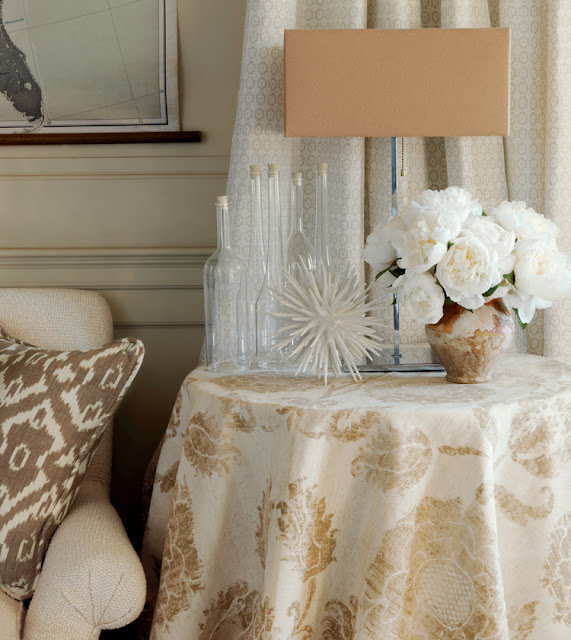Five Things That Bug Buyers
 |
Have you ever fallen in love with someone because of the little things that person did, or had? A glance, a touch, a scent? Or avoided befriending someone whose little habits bothered you? Yeah, that happens with homes on the market, too.
Little things, the details, can be what tip the scale towards a purchase offer. By definition, details are small facts or features. And a collection of your home's details determine just how desirable your property is to buyers. So, let's review some of the details that home sellers commonly ignore, but that bother homebuyers.
Cluttered closets
Before you get down to the nitty-gritty of home staging, go through your home and decide what you don't need in the months ahead. Keep what looks great and functions well, whatever makes your home look prettier and more liveable. I've blogged about how to make decluttering easier.
Having too many belongings in plain sight makes rooms feel cluttered and chaotic. You can't stash excess in your closets, but you can store them offsite. Remove items like family photos, religious items, sports teams' and political posters, and other personal or controversial belongings.
If you're not sure what size unit to rent temporarily, here's a handy guide that gives formulas for deciding how much storage space you'll need.
 |
| Buyers have a right to look into cabinets. They want to see what they are paying for. Can your shelves look this neat? |
Nasty front door
If you think those buyers begin judging your home once they step inside, think again. That decision-making begins while they stand waiting as the Realtor punches in numbers to unlock the front door.
They are looking at your front door, up close. How does it look? Sometimes a paint job is just a paint job, and if your door shows signs of wear, fading, warping, poor sealing, or obsolescence, consider replacing it with a stylish and fully functioning one.
Today's doors look impressive, are more secure, and are easier to maintain than your grandma's front door. The money you spend on replacing your entry door has surprisingly an average return of 74.9% when you sell.
 |
| A front door is the smile on your house. It's part of curb appeal and where the judgments begin. Photo: Hidden Potential |
Poor air quality
Once buyers are inside your home, one of the first things they'll notice is how it smells. Lingering cooking aromas, pet smells, and mold or mustiness are the main offenders. While your home is on the market, you're going to have to be diligent about keeping these problems in check. These days, more people have allergies and chemical sensitivities, and more people have pets. Don't drive them away.
Start with a deep clean, and then don't mask problems with artificial fragrances. If the air ducts and heat exchangers in your home are clean your home will smell good and be healthier. Good airflow will guarantee that all smoke alarms function correctly, too.
The industry guidelines call for cleaning HVAC ductwork every three to five years. If you have systems like your home's heat exchanger cleaned as well, make the documentation of the work part of your sales package, so buyers know they will be saving $5,000 to $10,000 per year in energy expenses.
Dark rooms
Dimly lit spaces make any dwelling feel gloomy and uninviting. But a well-lit home feels welcoming and helps show off its best features. So, make sure to maximize natural lighting by leaving blinds and curtains open. I wrote my eBook, No-Sew Window Treatments to Stage Your Home specifically for budget-conscious, DIY homestagers.
Remember that you can't count on a real estate agent to turn on multiple floor and table lamps ahead of a showing. LED lights can come to your rescue because they use at least 75% less energy, so if you want to install them under your kitchen cabinets and leave them on, or leave table lamps on for the ambiance they create, don't feel like a spendthrift.
To avoid the cool look some LEDs emit, choose the warm-toned ones that emit light in the range of 2700 to 3000 Kelvin, imitating the cozy feeling of incandescent fixtures.
Too many colors
No matter what your own palette preferences are, a home with a color scheme that's all over the map makes it hard for people to relax and enjoy the calm sense a home needs-- whether they are on tour, viewing your home online, or watching a video walk-through.
A simple color scheme makes your home look larger, cleaner, and newer. When each of your rooms has a different wall color, and you don't want to tackle the project yourself, it will pay you to hire painters.
The stats say you'll get a return on your painting investment of over 100%. Choose a paint color that harmonizes with your fixed features -- things like the counters, bath fixtures, and cabinets. Hire a painting company that has experienced and reliable workers, who don't get hurt on the job, who treat your home and you with respect, who stay with the job until it is finished, and who are treated well by their superiors, including fair pay. To simplify the painting, you may prefer to work with one individual instead of a crew. Your listing agent can be a source for a good painter.
By choosing a single color to paint your home's interior you'll save money. Buying paint in a 5-gallon size costs less than buying multiple colors in 1-gallon cans.
Most people dislike having to paint. Since color preferences are highly personal, it's unlikely that all the colors you like will be the preferences of a new owner. Many potential buyers will be dreading the thought of spending a few weekends painting some rooms the colors they prefer after they move in.
 |
| Having a unified, simple color scheme that runs through your whole house makes paint touch-ups simple and foolproof. |
Get the look, get the book
Do you want a buyer to fall in love with your home? Get the details right, and you'll see that generous purchase offer fast. When it's time to home stage, don't go it alone. You'll find all the advice you need on staging your home for the real estate market in my 155-page PDF, DIY Home Staging Tips to Sell Your Home Fast and For Top Dollar. You can download it now and start your staging today.



































